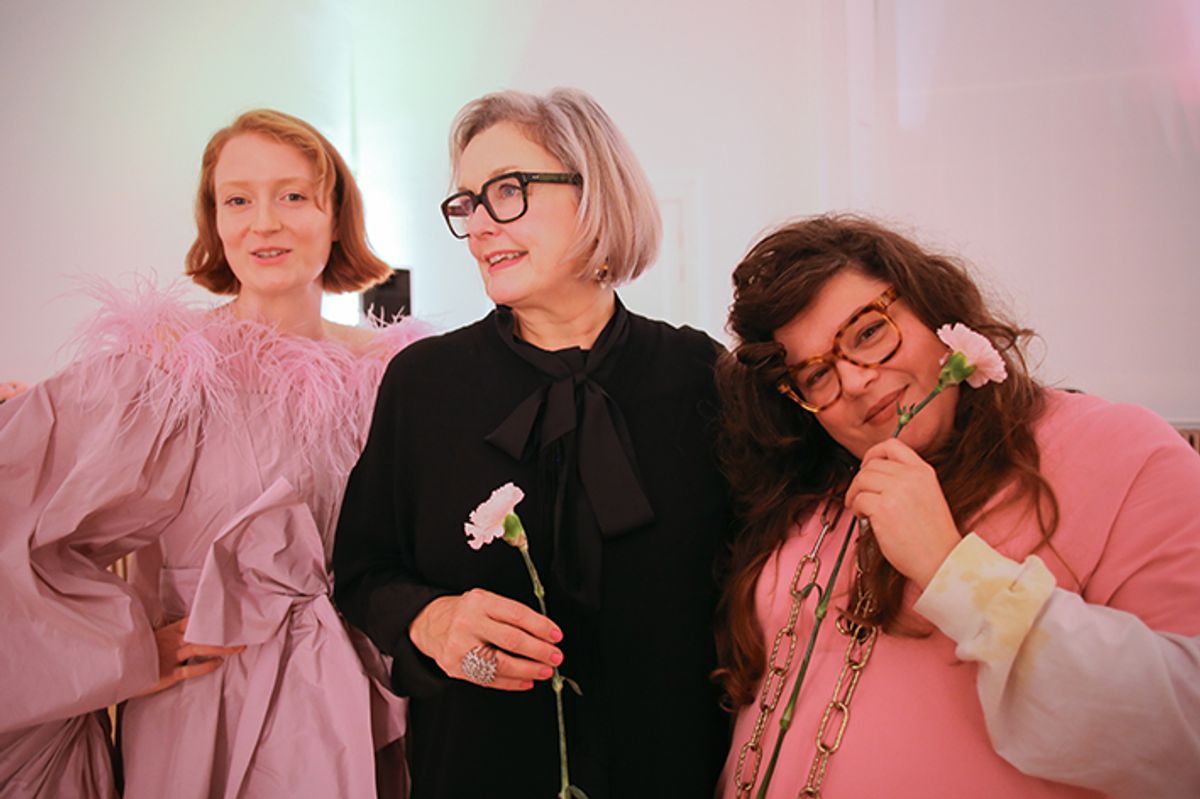The Contemporary Art Society was bathed in a rosy glow on Tuesday night as Tai Shani hosted the latest in its fundraising Artist Tables series with a pink-lit, pink-themed dinner held at 4 Cromwell Place. The evening included two episodes of The Neon Hieroglyph, Shani’s most recent performance work and guests included the Hayward's director Ralph Rugoff, the photographer Ori Gersht, the collectors Muriel and Freddy Salem, Simon Wallis, the director of the Hepworth Wakefield and the patron-collector Valeria Napoleone, all of whom vividly adhered to the pink/neon dress code.
Shani describes The Neon Hieroglyph as “a hallucination” and “a series of poetic considerations of the feminine” and her specially adapted iteration of the piece featured a projected film of a female avatar as well as a live performance by the actress Molly Moody, who sat atop a pedestal surrounded by vases of roses. She was clad in a voluminous rose taffeta gown by the fashion designer Roksanda Ilincic, who was also in the audience, resplendent in another of her own creations in pleated salmon pink. Live music was performed by the musician and composer Maxwell Sterling—son of the legendary artist Linder Sterling.
Another theme running through Shani’s work was how the housewives of the Sicilian island of Alicudi exerted their power over the population by using the hallucinogenic grain-based fungus Ergot as an ingredient in baking their notoriously mind-expanding local bread. Sadly there was no Ergot in last night’s autumnal menu created for the evening by the celebrity chef Ollie Dabbous, but enough bonhomie was generated for the evening to raise over £53,000 to enable CAS to continue to support artists by purchasing their work for institutions and galleries across the UK. This was greatly assisted by Tai Shani donating two large paintings and also creating a luscious gold-leafed limited edition work especially for the occasion.
Shani’s Artist’s Table also inaugurated Cromwell Place’s refurbished Lavery Studio where for many years the renowned Anglo-Irish portrait painter John Lavery had immortalised many of the leading lights of Edwardian and early 20th-century society. One feels he would have thoroughly approved of last night’s glamorous and productive gathering.



